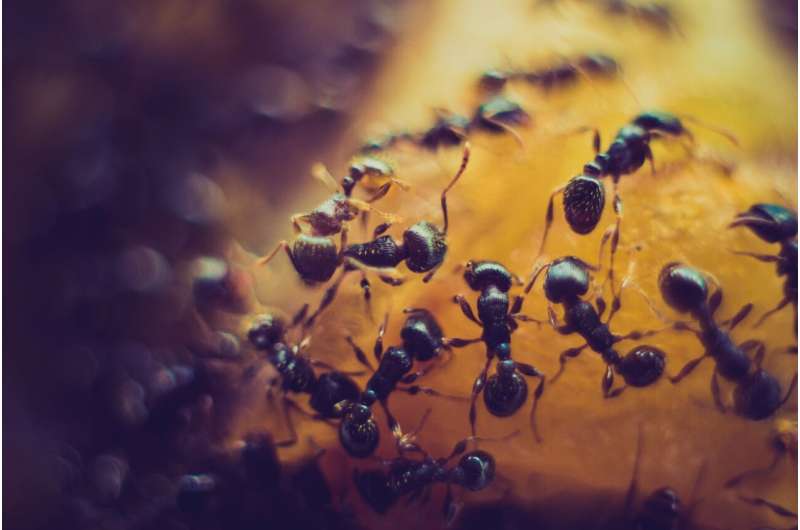This article has been reviewed according to Science X's editorial process and policies. Editors have highlighted the following attributes while ensuring the content's credibility:
fact-checked
peer-reviewed publication
proofread
Ants found to be able to predict queues and avoid them

As humans, we are pretty good at working out how busy the cafeteria at work will be, and going elsewhere if we think it will be full. Now, researchers at the University of Regensburg have discovered that ants also understand that some feeding places can get full, and avoid them if they think a lot of ants are going there already.
Queuing is annoying and wastes our time, so we try to avoid it. Imagine if your favorite lunch place was a tiny take-out restaurant, and you saw a lot of people coming your way with food from there. If you're really hungry, you might think "oh, it's probably quite busy, maybe I'll go somewhere else today." Ants can have exactly the same problem: they get a lot of their food from insects like aphids that make honeydew. But, small groups of aphids only make a bit of honeydew, and it takes a long time to make more once it's been eaten.
"Ants are more similar to us than most people think," said Dr. Laure-Anne Poissonnier, who led the study. "So, I wondered—would ants also try to avoid food sources they like, if the food sources have limited space and look busy?" To test this, the researchers let ants eat from a special ant feeder, either with holes for a lot of ants to feed from, or only enough space for one ant. They then let the ants know that there is another feeder, also easily crowded or not, somewhere else.
When the hungry ants came again looking for something to eat, half of them met a lot of full ants coming back from the first, favorite feeder, and half met no other ants. If the hungry ants had used feeders with a lot of holes last time, or didn't meet any other ants this time, they just went to their favorite feeder. But, if the hungry ants had used easily-crowded feeders, and met a lot of other ants coming back from the favorite feeder, they avoided it, and went instead to the less-favored alternative.
"The really crazy thing," says Dr. Tomer Czaczkes, who also worked on the study, "is not even that they avoided the crowded food at rush-hour. That makes sense. The real question is: how did they work out that the feeder could get crowded?"
The ants never saw that feeder before in their lives, and never experienced crowding. Yet, somehow, they worked out that this feeder can only fit a few ants.
"This suggests," adds Laure-Anne, "that the ants have a very deep understanding of how the world works."
The work is published in the journal Proceedings of the National Academy of Sciences.
More information: Laure-Anne Poissonnier et al, Ants combine object affordance with latent learning to make efficient foraging decisions, Proceedings of the National Academy of Sciences (2023). DOI: 10.1073/pnas.2302654120
Journal information: Proceedings of the National Academy of Sciences
Provided by Universität Regensburg



















